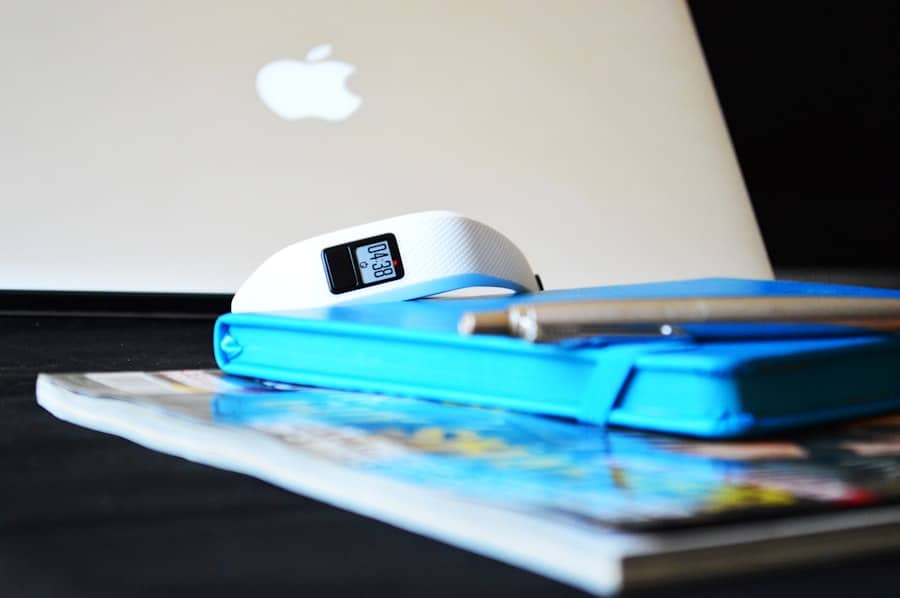In today’s fast-paced digital landscape, the sheer volume of notifications can be overwhelming. Smart notifications are designed to streamline this experience, ensuring that users receive only the most relevant alerts. These notifications leverage advanced algorithms and machine learning to discern which messages are important based on user behavior, preferences, and context.
By filtering out the noise, smart notifications help users focus on what truly matters, enhancing productivity and reducing distractions. The concept of smart notifications extends beyond mere convenience; it represents a shift in how we interact with technology. Instead of being bombarded with alerts from every app, users can enjoy a more curated experience.
For instance, a smart notification system might prioritize messages from family and close friends while relegating less critical updates to a secondary status. This intelligent filtering not only saves time but also fosters a more meaningful connection with the information that truly impacts our lives.
Key Takeaways
- Smart notifications help users stay informed without being overwhelmed by constant alerts
- Setting up smart notifications involves selecting specific apps and types of notifications to receive
- Customizing smart notifications allows users to tailor their alert preferences to their specific needs
- Utilizing Do Not Disturb mode can help users avoid interruptions during specific times or activities
- Managing app notifications involves regularly reviewing and adjusting which apps can send alerts
Setting Up Smart Notifications
Setting up smart notifications is often the first step toward reclaiming control over your digital life. Most modern devices and applications come equipped with built-in features that allow users to customize their notification settings. To begin, navigate to the settings menu of your device or app, where you will typically find a dedicated section for notifications.
Here, you can enable smart notifications and adjust various parameters to suit your preferences. Once you have activated smart notifications, it’s essential to review the permissions granted to each application. This process involves determining which apps are allowed to send notifications and under what circumstances.
For example, you might want to receive alerts from your calendar app for upcoming events but silence notifications from social media during work hours. By fine-tuning these settings, you can create a notification environment that aligns with your daily routine and personal priorities.
Customizing Smart Notifications
Customization is key when it comes to maximizing the effectiveness of smart notifications. Many devices offer granular control over how and when notifications are delivered. Users can often choose between different alert styles, such as banners, sounds, or vibrations, allowing for a personalized experience that suits their lifestyle.
For instance, someone who prefers a quiet workspace may opt for silent notifications that only appear on the screen without any sound. Moreover, some platforms allow users to set specific rules for notifications based on time or location. This means you can receive alerts for important messages during work hours while silencing less critical updates in the evening or when you are at home.
By taking advantage of these customization options, you can ensure that your smart notifications serve as helpful reminders rather than intrusive interruptions.
Utilizing Do Not Disturb Mode
Do Not Disturb (DND) mode is an invaluable feature that complements smart notifications by providing users with a temporary escape from constant alerts. When activated, DND mode silences all incoming notifications, allowing individuals to focus on tasks without distraction. This feature is particularly useful during meetings, study sessions, or any time when concentration is paramount.
However, DND mode is not just a one-size-fits-all solution; it can be tailored to meet specific needs. Many devices allow users to create exceptions for certain contacts or apps, ensuring that critical messages still come through even when DND is active. For example, you might want to receive calls from family members while silencing all other notifications.
By leveraging DND mode effectively, users can strike a balance between staying connected and maintaining their focus.
Managing App Notifications
Effective management of app notifications is crucial for maintaining a clutter-free digital experience. Each application has its own notification settings, which can often be adjusted independently. To manage these settings effectively, start by reviewing the apps installed on your device and identifying which ones are essential for your daily life.
Once you have a clear understanding of your priorities, you can begin to disable or limit notifications from less important apps. In addition to disabling unnecessary notifications, consider grouping similar alerts together. Many operating systems now offer features that allow users to bundle notifications from the same app into a single alert.
This not only reduces clutter but also makes it easier to manage multiple notifications at once. By taking control of app notifications in this way, you can create a more organized and efficient notification system that aligns with your personal and professional needs.
Prioritizing Notifications
Prioritization is a fundamental aspect of managing smart notifications effectively. Not all alerts carry the same weight; some require immediate attention while others can wait. By establishing a hierarchy of importance for your notifications, you can ensure that critical messages are addressed promptly while less urgent ones are dealt with later.
Many devices now offer features that allow users to categorize notifications based on their urgency or relevance. For instance, you might designate work-related emails as high priority while marking social media updates as low priority. This categorization not only helps in managing time effectively but also reduces the anxiety associated with constantly checking for new alerts.
By prioritizing notifications in this manner, users can cultivate a more focused and productive digital environment.
Using Notification Aggregators
Notification aggregators are powerful tools that can help streamline the management of alerts across multiple platforms and applications. These tools consolidate notifications into a single interface, allowing users to view and respond to messages without switching between different apps or devices. This centralized approach not only saves time but also reduces the cognitive load associated with managing numerous alerts.
Many notification aggregators come equipped with advanced filtering options that enable users to customize their experience further. For example, you might set up filters to display only work-related notifications during business hours while silencing personal messages until later in the day. By utilizing notification aggregators effectively, users can create a more organized and efficient workflow that enhances productivity and minimizes distractions.
Establishing Notification-Free Zones
In an age where digital connectivity is ubiquitous, establishing notification-free zones has become increasingly important for mental well-being and focus. These zones are designated areas or times where individuals consciously choose to disconnect from their devices and refrain from engaging with notifications. Whether it’s during family meals, while exercising, or before bedtime, creating these boundaries allows for deeper connections with oneself and others.
To successfully implement notification-free zones, it’s essential to communicate your intentions with those around you. Inform family members or colleagues about your designated times for disconnection so they can respect your boundaries. Additionally, consider using features like scheduled Do Not Disturb mode during these periods to reinforce your commitment to being present in the moment.
By establishing notification-free zones, individuals can cultivate mindfulness and enhance their overall quality of life amidst the constant barrage of digital alerts. In conclusion, navigating the world of smart notifications requires a thoughtful approach that encompasses understanding their purpose, setting them up effectively, customizing them to fit personal needs, and managing them wisely. By prioritizing important alerts and utilizing tools like Do Not Disturb mode and notification aggregators, users can create a more harmonious relationship with technology.
Ultimately, establishing notification-free zones further enhances this balance, allowing individuals to enjoy both connectivity and tranquility in their daily lives.
If you’re looking to improve productivity in the workplace, consider implementing smart notifications to minimize distractions. By utilizing tools and techniques outlined in the article on best software for 3D printing, you can streamline your workflow and stay focused on important tasks. These notifications can help you stay organized and prioritize your workload effectively. Check out the article for more information on how to optimize your work environment and reduce interruptions.
FAQs
What are smart notifications?
Smart notifications are notifications that are designed to be more intelligent and context-aware. They use algorithms and user behavior patterns to deliver relevant and timely information, minimizing unnecessary interruptions.
How can smart notifications minimize distractions at work?
Smart notifications can minimize distractions at work by filtering out irrelevant notifications and delivering only the most important and time-sensitive information. This helps employees stay focused on their tasks and reduces the overall amount of interruptions throughout the workday.
What are some examples of smart notifications?
Examples of smart notifications include notifications that are based on user preferences, location, time of day, and relevance to the current task. For example, a smart notification might alert a salesperson about a new lead in their current location, or remind a project manager about an upcoming deadline.
How can I use smart notifications to improve my productivity?
To use smart notifications to improve productivity, you can customize your notification settings to only receive alerts for high-priority tasks and time-sensitive information. You can also utilize tools and apps that offer smart notification features to help you stay focused and minimize distractions.
What are some best practices for using smart notifications at work?
Some best practices for using smart notifications at work include setting specific times to check and respond to notifications, customizing notification settings based on your work priorities, and utilizing tools that offer intelligent notification features to help you stay organized and focused.



